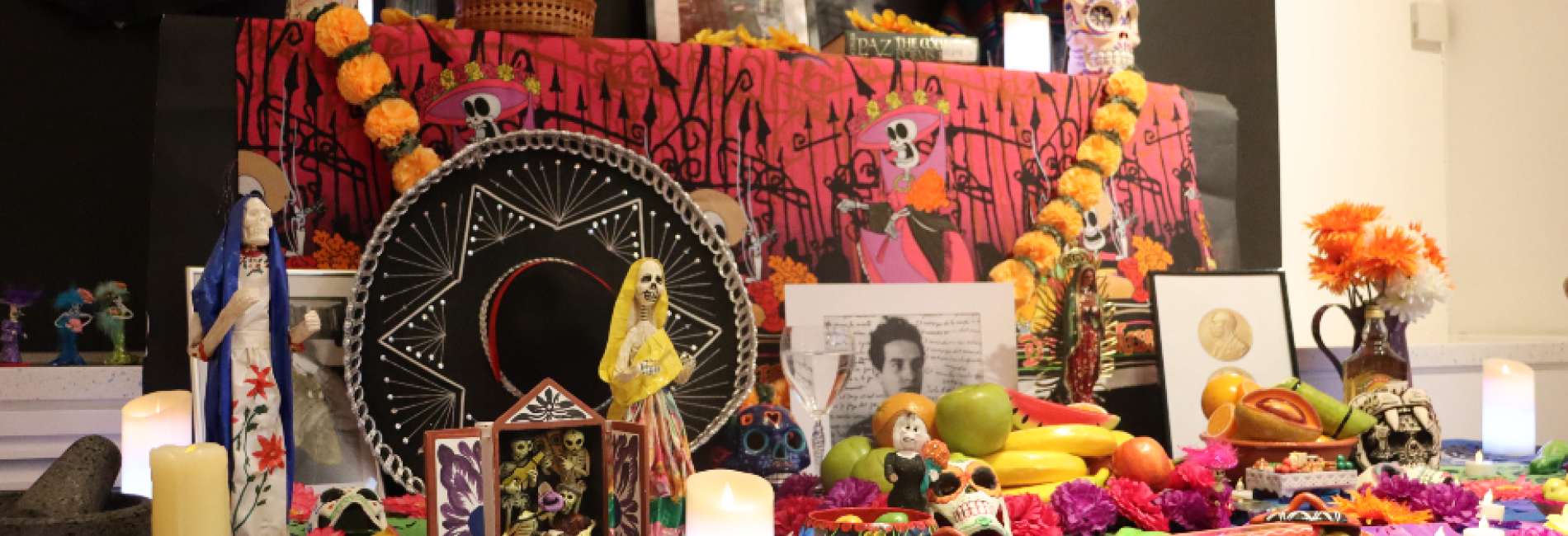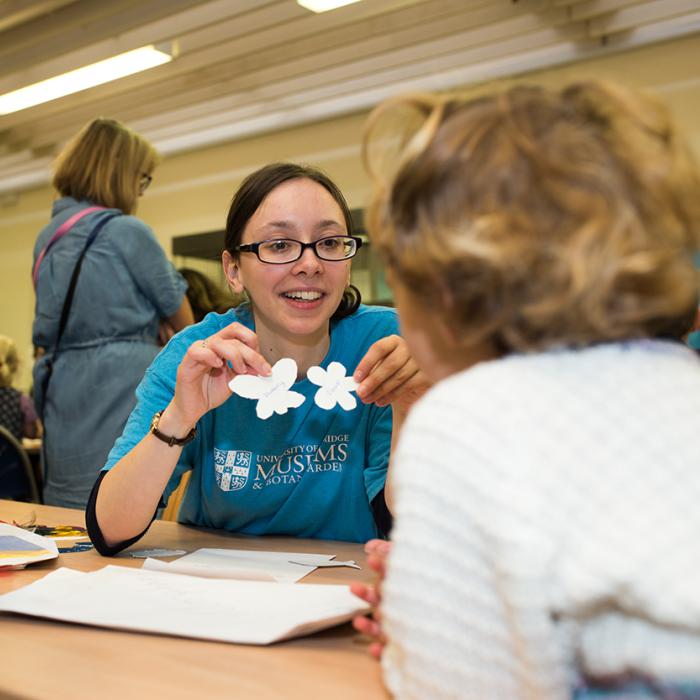Admire the vibrant altar created by the University of Cambridge Mexican Society to celebrate the Day of the Dead.
Event information
Time
Museum of Archaeology and Anthropology,
Downing Street,
Cambridge
CB2 3DZ
Our lift is currently out of order. As a result, access to the 1st and 2nd floor galleries and our toilets is by stairs only. We apologise for any inconvenience caused. The nearest public toilets to the Museum are at the Grand Arcade – a two minute walk away.
About the event
Our Día de los Muertos (Day of the Dead) altar is back! Located on the second floor we are once again delighted to host the altar created by the University of Cambridge Mexican Society. Entry to the museum is free, so why not drop by and take a look.
What is Día de los Muertos?
Día de los Muertos, often referred to as the Day of the Dead, has been celebrated for at least 3,000 years. It brings together elements of Aztec and Maya religions as well as Catholicism (brought to Mexico by the Spanish).
For Mexicans everywhere, the Day of the Dead is a time for remembering relatives, friends and ancestors in a lighter way, with the emphasis on laughter and music, rather than sorrow and fear. The colourful tradition reflects the belief that we are not truly dead until there is no one alive to remember us.
The celebrations start around the 28 October, reaching their peak on the 2 November. A key part of the festival's building an altar in the most important area of the house. The whole family takes part in decorating the altar to honour a deceased relative. Usually, altars have three levels - to represent the sky, the earth, and the underworld.
About the altar and offerings (ofrendas)
Mexicans believe that the spirit of the deceased person returns during the Day of the Dead to enjoy what they most enjoyed in life, so special attention is given to decorating the altar.
The lowest level of the altar symbolises the underworld and is the first to be arranged. Flowers, candles, and wood dust shapes make a trail to guide the deceased soul to the altar.
The second level represents the world of the living, and this is where the objects that the person used or enjoyed are placed. Common items include games, musical instruments, clothes, drink, and food (including bread and sweets). The food is placed in baskets and pots.
The third level represents the sky and the spiritual level. A picture of the deceased is placed here along with a glass of water and a cross made of salt or ashes.


